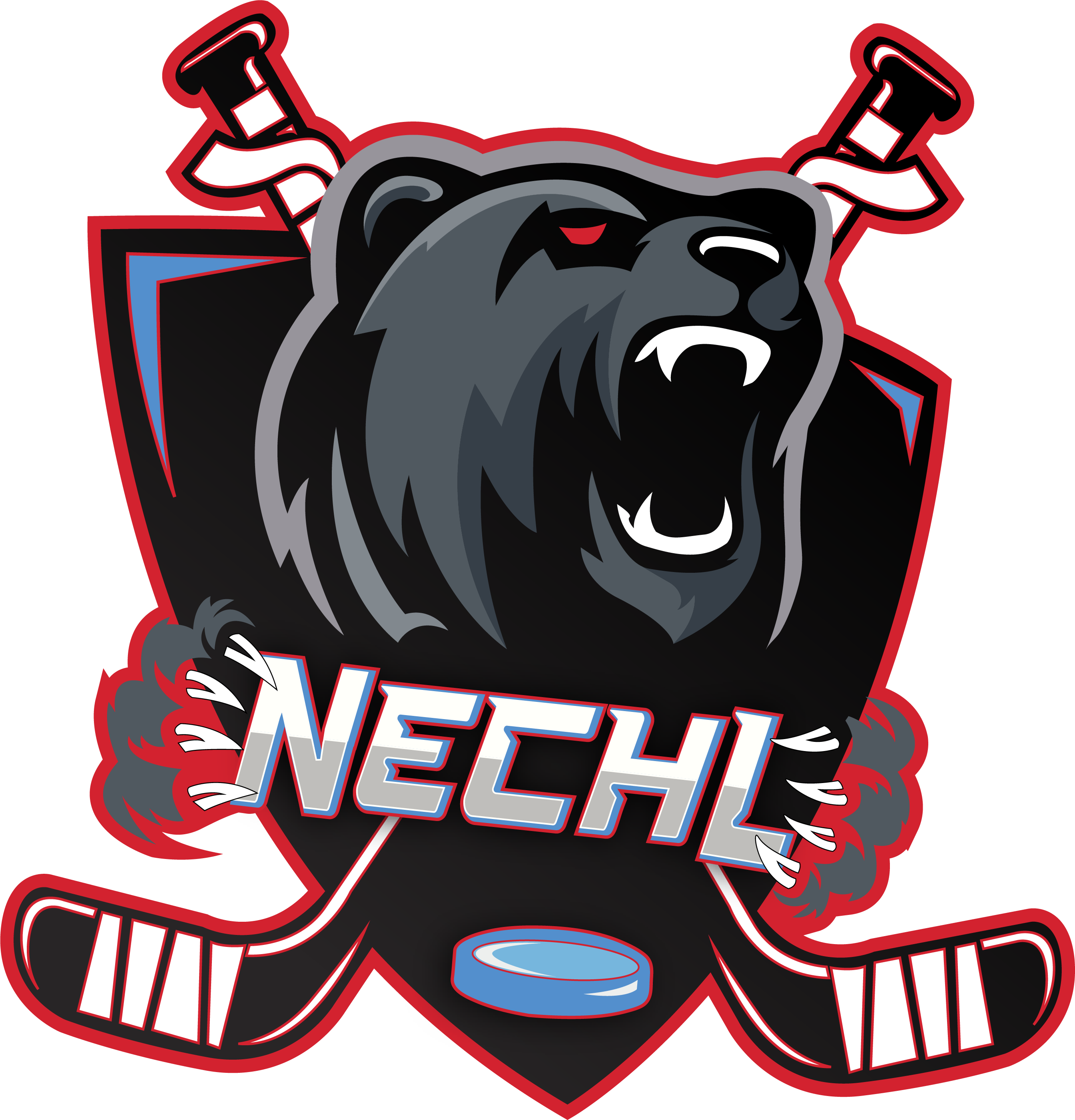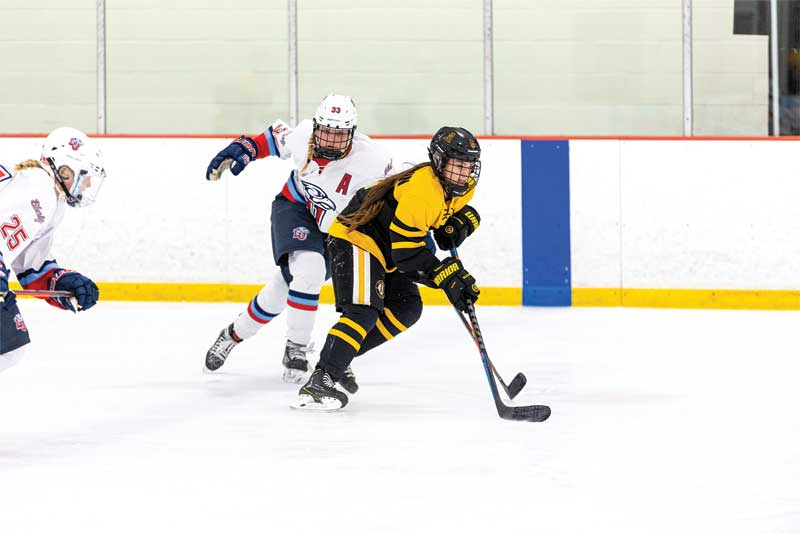From Sports Event Media Group
By D. Fran Morley
The growth of hockey—one of the four major sports in North America—continues, including a new professional women’s league debuting this year.
The sport draws thousands of spectators to college and professional games, even in areas where an outdoor ice rink is impossible. However, something about it sets it apart from most other sports, according to Mike Snee, executive director of College Hockey, Inc. a non-profit organization that promotes NCAA hockey.
“Look around at any NHL game. People love it, but unlike almost every other spectator sport, most people watching hockey have never played hockey. By comparison, almost everyone has played basketball, football, or baseball, even if just in school or shooting hoops in the driveway. And these days, almost everyone under 30 has played soccer. Hockey isn’t like that. Not yet,” Snee says. “Our goal is to have college hockey follow the success of the NHL, which has expanded coast to coast, border to border. The 2023 Stanley Cup final was between teams from Las Vegas and Miami. No one was surprised by that, but 30 years ago, it would have been unheard of. The NHL has blazed a trail, and it’s up to colleges to follow.”
Craig Barnett, executive director of the American Collegiate Hockey Association (ACHA), the national association of non-NCAA collegiate hockey, says hockey is enjoying rapid growth partly thanks to teams outside of traditional hockey areas.
“I’m from Toronto, and when I originally came to the [U.S.] to play college hockey, I attended a northern school because that’s where hockey was. But I can tell you that if there had been good college hockey then in someplace like Arizona or Florida, I might have picked a different school,” he says.
Where it started, and where it’s going
College hockey has been played for more than 100 years, starting with teams in Canada and the formation of the Intercollegiate Hockey Association of America in 1898, with original members Yale, Columbia, University of Pennsylvania, and Brown. Several Midwestern colleges joined the association in the 1920s. Professional play began in the early 1900s but took off with the formation of the National Hockey League (NHL) in 1917 with several Canadian teams. The NHL then expanded into the United States in 1924 with the addition of the Boston Bruins.
Today, there are 32 NHL teams throughout North America, and college hockey is available to virtually everyone with teams of different levels at many schools. But NCAA athletics are a distinctly American cultural institution, and that creates a very specific draw for players, Snee says.
“Whether it’s hockey, basketball, or football, competing for your school is huge in the U.S. We all know that. But it’s not really a part of the college culture in other parts of the world,” he says. “So as hockey grows in popularity, the next thing for serious players to do is play college hockey in the U.S.” NCAA Division I men’s hockey is currently played at 64 schools across six conferences, and NCAA women’s hockey has 44 programs at five conferences.
According to Snee, more Europeans and Canadians are coming to the U.S. today to play college hockey than in years past. “There’s just a greater awareness and interest than there used to be. There’s a growing number of top-quality Canadian players who are choosing to come to the U.S. to play college hockey. The number of Europeans coming to play at U.S. colleges has quadrupled in the past 10 years.”
It’s no surprise social media plays a big role in this, Snee says. “Thanks to what we see and do on our phones, we all know more about other places than we ever did,” he explains. “At one time, a player in Canada or Europe didn’t know much about U.S. college sports in general. Now they can see the potential for development—in their hockey playing as well as academics—playing college hockey in the U.S.”
With more top players joining NCAA college hockey teams, it’s only natural that the best of them will go on to the NHL. According to College Hockey, Inc., 349 former college players were in the NHL in 2021-22, an increase of 65 percent over the past two decades.
Non-NCAA college hockey play is also seeing a great increase in participants for a variety of reasons, according to Barnett.
“We are now in 47 states and two provinces, with five divisions of play involving 13,000 players every year, so we have a place for almost anybody who wants to play college hockey at whatever level,” he says. “Our top teams are excellent, very competitive, well-funded, and well-coached. On the other end, we offer good opportunities to young men and women who want to focus on academics, as they should at college, but still have fun playing college hockey, just maybe with not as much commitment necessary as in our top levels.”
Choosing the right college to play for depends on the student’s goals, Barnett says.
“When we talk with prospective students, we start with the academic aspect. Someone may want to go to a certain school for whatever academic program they offer and that might be an ACHA school. For me, academics should always come first: does this school meet your academic goals?” he says. “But just as important, you’ve got to like the area where the school is, and you’ve got to like your social life there. Hockey or any sport is important, but it’s just one part of college life. So students need to balance all that to choose a school. You want to like the school, like your classes, like the area, and like playing hockey there.”
Players from ACHA teams have gone on to “amazing places,” he says. “We have former players working in NHL offices and for top corporations around the world. A lot of men and women from ACHA teams are now playing professional hockey in Europe, and we probably had three or four players in the NHL this past year who came up through ACHA teams,” he adds. “Our focus is to provide opportunities at the college level to have the right education plus great hockey skills if they choose to go on to professional play.
This past summer, ACHA and USA Hockey, the national governing body for the sport in the U.S., announced a multi-year extension of their decades-long partnership. Under the agreement, USA Hockey will collaborate with the ACHA to provide support and resources, promote college hockey, and showcase the opportunities that are provided on campuses through the ACHA.
A new era for women’s hockey
Women have played hockey in North America almost since the game was first introduced, and it continues to be popular with youth teams as well as both NCAA and ACHA college teams. Beginning in January 2024, the Professional Women’s Hockey League debuts with a 24-game season with six franchises in Boston, Minneapolis-St. Paul, the New York City area, Toronto, Montreal, Que., and Ottawa, Ont. According to an article at ESPN.com, the league is fully funded by Los Angeles Dodgers co-owner Mark Walter and his wife who purchased the assets of a previous women’s organization, the Premium Hockey Federation. The full schedule is yet to be announced.
Tennessee State makes hockey history
History was made this summer with the announcement of the first men’s college hockey program at a historically black college or university (HBCU), Tennessee State University in Nashville.
In a statement, TSU president Glenda Glover said, “Bringing ice hockey to Tennessee State University is a part of our continued commitment to provide our students with new opportunities and to broaden new interests in areas where they have traditionally had limited or no access. We appreciate our ongoing partnership with the Nashville Predators, which has played a pivotal role in our decision to pursue this historic undertaking of starting an ice hockey program … TSU has a tremendous legacy in athletics. Adding ice hockey to our programs will start a new chapter and build upon that legacy.”
TSU’s hockey program will start in 2024, beginning as a club-level program, but the school to aspires to achieve NCAA Division 1 status for both men’s and women’s sides shortly, according to the press statement.
Snee is confident Tennessee State will be the first of many other HBCU schools with college hockey. “We’re very excited about this news, of course, but we don’t want it to be an isolated good news story, and we’re sure it won’t be. TSU is blazing a trail. It’s going to be hard work, but they’ve got a lot of great support,”’ he says.
Barnett is also excited about the team. “TSU has great support from the NHL and the Nashville Predators as well as the Nashville community. Their goal is to play NCAA, but it’s natural for them and other smaller programs to consider ACHA first. We’d welcome them.”
(Originally published at https://sportseventsmediagroup.com/college-hockey-grows-on-the-nhls-success/)
































